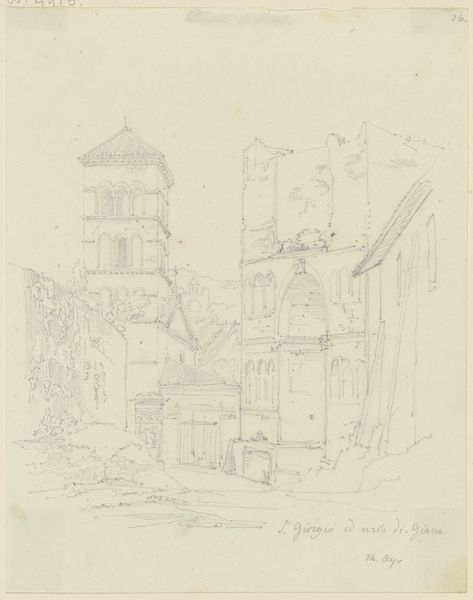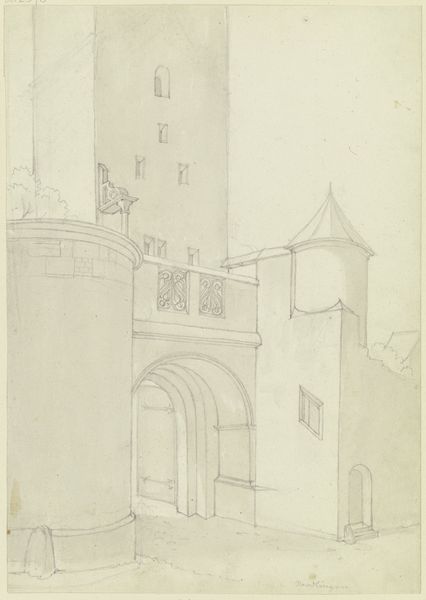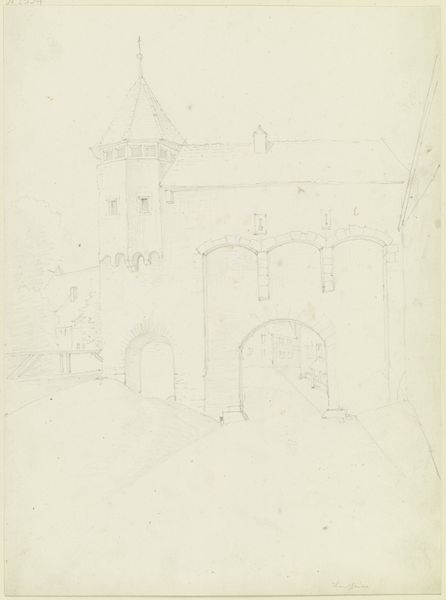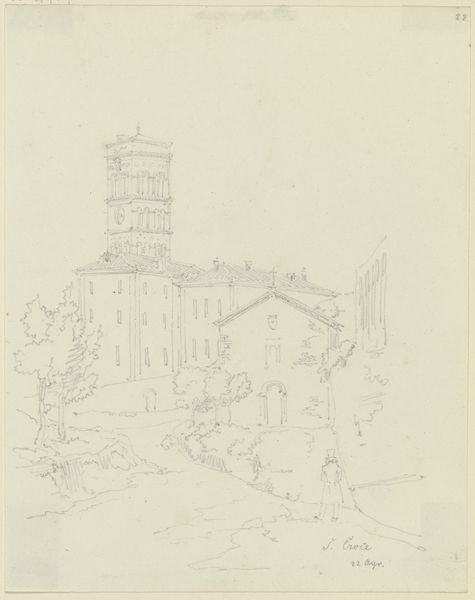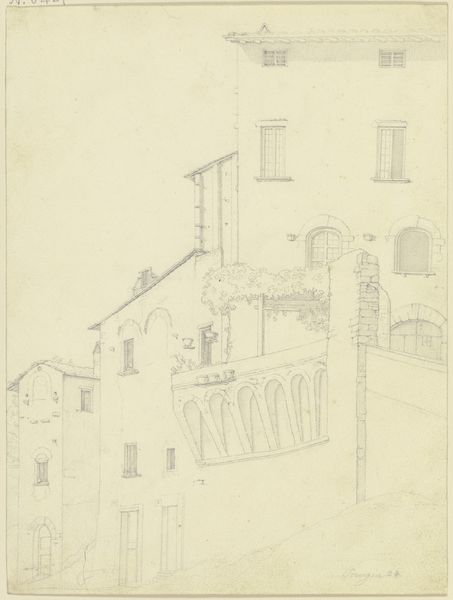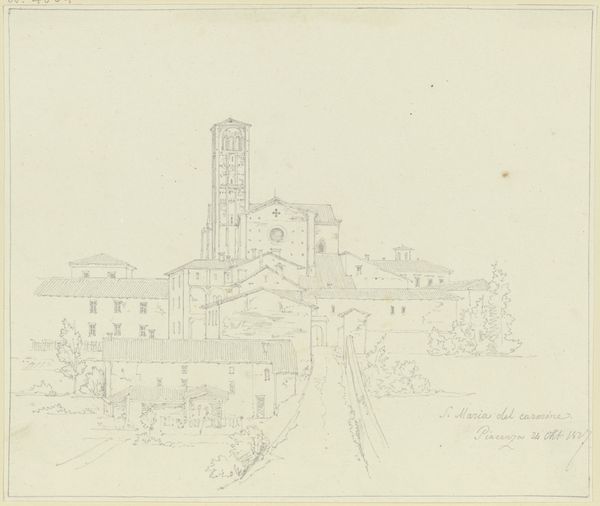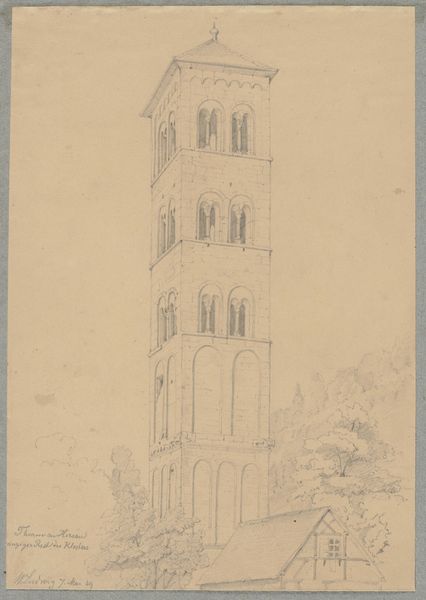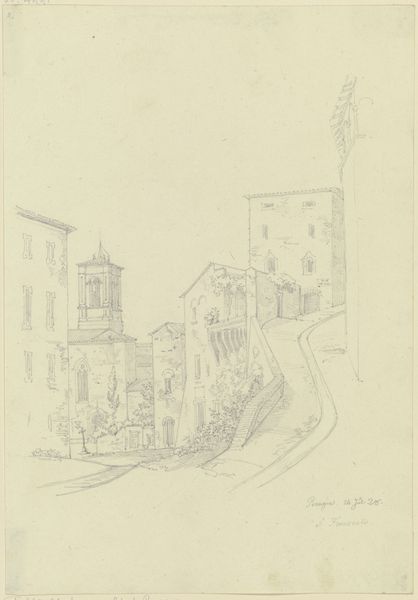
drawing, paper, pencil, architecture
#
architectural sketch
#
drawing
#
aged paper
#
16_19th-century
#
quirky sketch
#
neoclassicism
#
old engraving style
#
paper
#
personal sketchbook
#
german
#
idea generation sketch
#
sketchwork
#
pen-ink sketch
#
pencil
#
architecture drawing
#
sketchbook drawing
#
cityscape
#
architecture
Copyright: Public Domain
Friedrich Maximilian Hessemer created this pencil drawing of Santi Giovanni e Paolo in Rome. Hessemer’s rendering of this significant Roman basilica invites us to consider the layers of history embedded in its architecture, and its place within the city’s cultural landscape. The church, dedicated to two Roman soldiers martyred in the 4th century, stands as a testament to the enduring power of the Catholic Church. Hessemer, working in the 19th century, was part of a generation that saw Rome as both a site of religious history and a living city, where the past was constantly being reinterpreted through new construction, restoration, and artistic representation. The way he depicts the building, with an emphasis on its scale and solidity, may reflect contemporary debates about the role of the church in modern society, and the relationship between tradition and progress. To fully understand this work, we might examine architectural records, religious histories, and accounts of Rome from this period. Through such research, we can begin to appreciate the complex interplay between art, religion, and society.
Comments
No comments
Be the first to comment and join the conversation on the ultimate creative platform.

